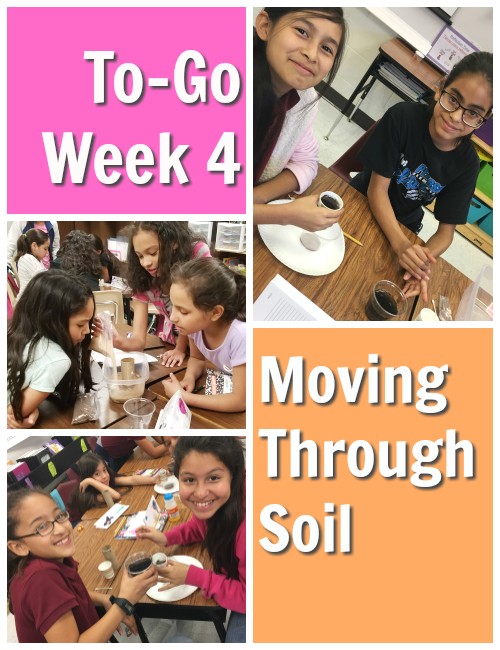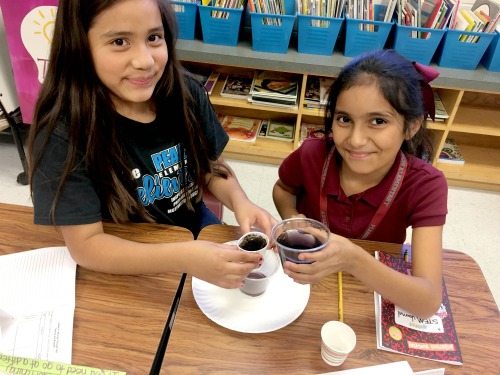Moving Through Soil
This week, After School To-Go students learned about aquifers, runoff, and other essential concepts in the Environmental Scientist career! Girls created a filter to observe the flow of polluted groundwater through Earth’s soil.

First, students discussed soil’s importance to the environment. Soil plays a role as a habitat for lots of critters, a source of nutrients for crops, and a material used to produce foundations for houses and other buildings. Next, students began construction of their own soil filters. Soil and sand were layered in paper cups to represent the naturally-occurring layers of sediment found in the ground. STEM Crew poured dirty and polluted water into each group’s soil- and sand-filled cups as students observed the difference between the filtered water and the original dirty water. While the filtered water looked clearer than the original, it still looked pretty mucky!

Girls then built a model of a well to observe the effects of water moving through the soil as groundwater. With different types of soil and a paper towel roll, students were able to simulate soil’s ability to filter polluted water. When water “polluted” with purple food coloring was poured around the well in the soil, water that collected in the well was red. Girls deducted that the blue pollutants had been filtered, but the red pollutants were able to collect in the well. At the end of the activity, students observed the different soils’ effectiveness as a filter. Sandy soils filter less, while clay soils and soils with lots of organic matter can catch more pollutants!

